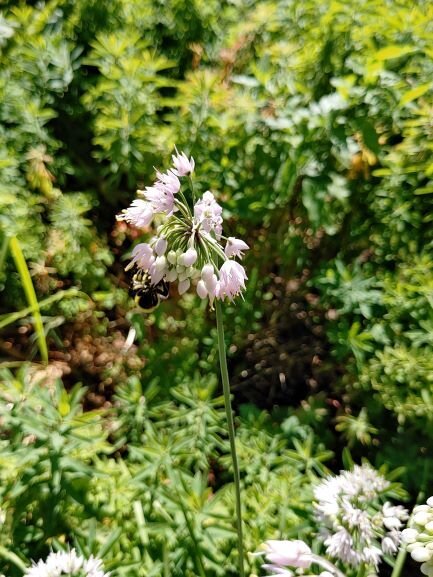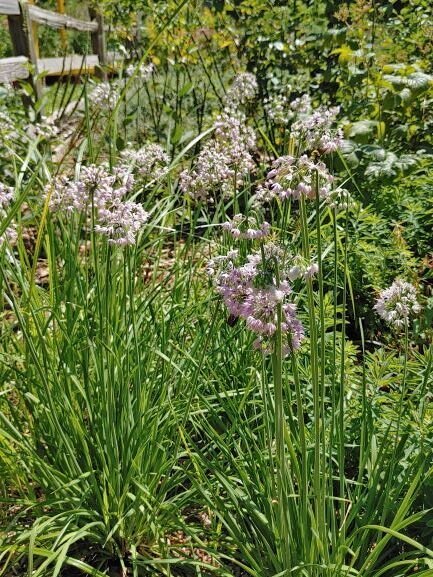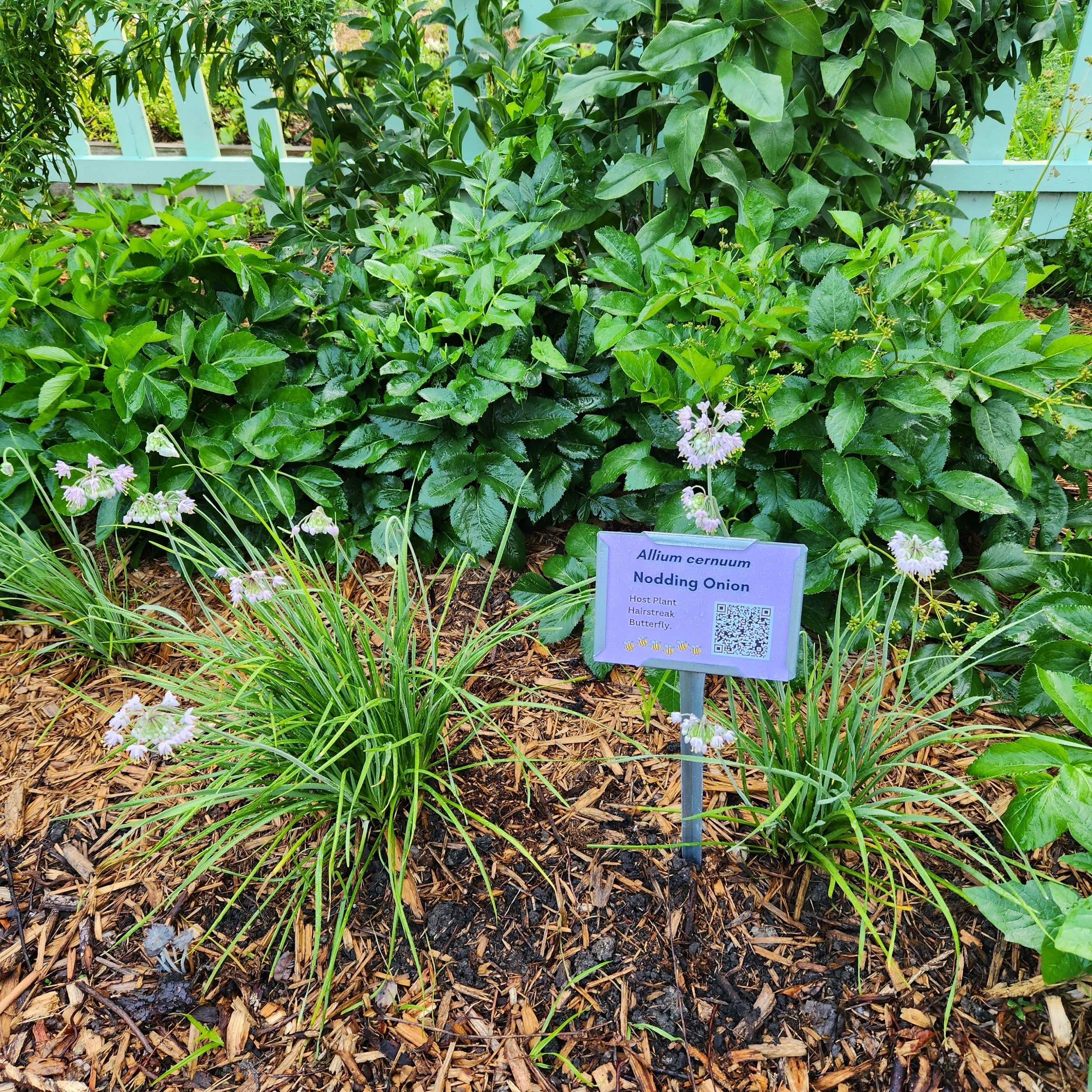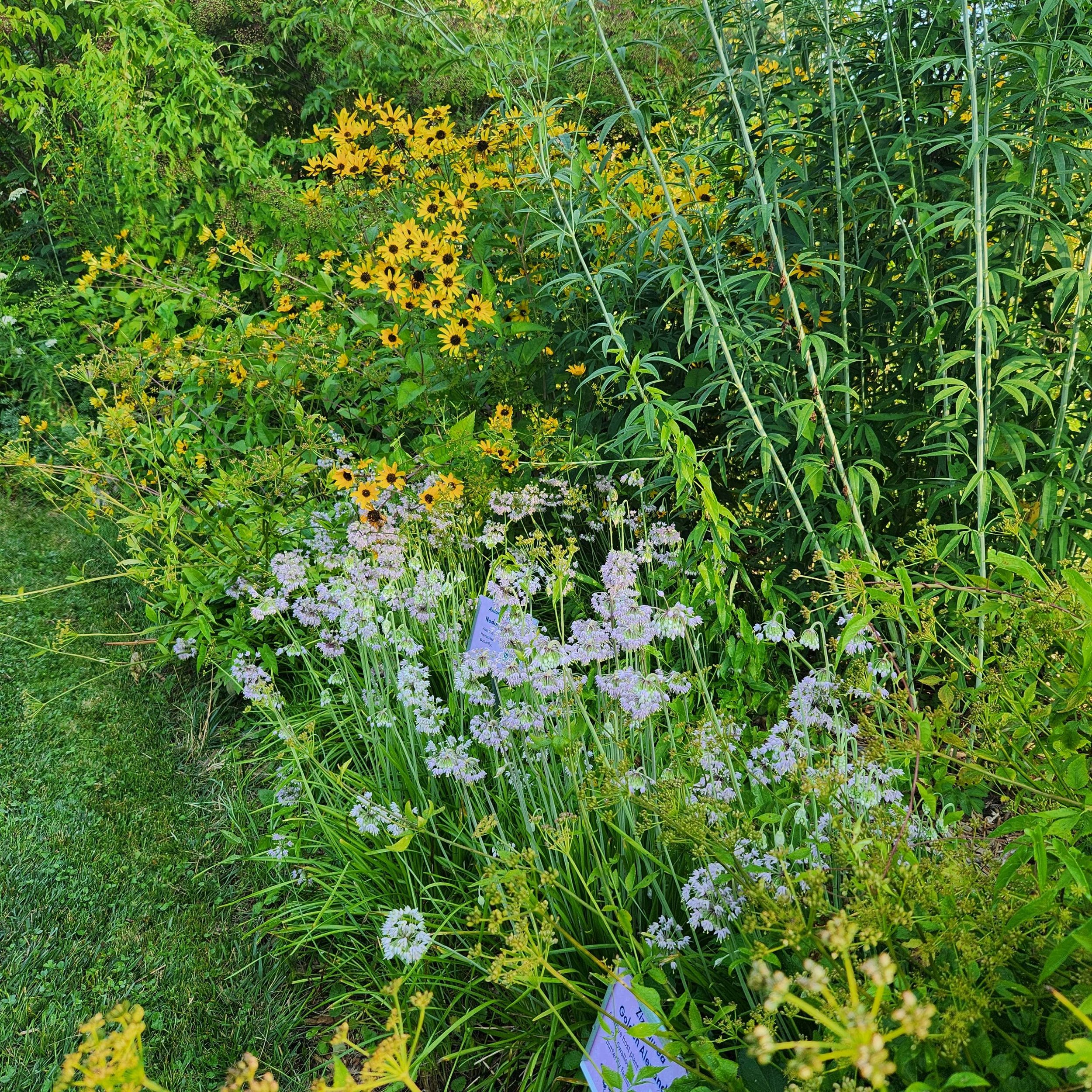Allium cernuum, Nodding Onion, Quart pot
Allium cernuum, Nodding Onion, Quart Pot
FS, Zone 3, blooms July to August, deer resistant, medium-wet to medium-dry, 1-1.5’ x .1’
The common name for this plant comes from the flower ball facing downward. This position is thought to protect the nectar supply that short tongue native bees and beetles seek. When visiting the flowers for nectar, larger bees end up collecting only the pollen.
This plant does best in full sun and well drained soil. It gradually spreads by seed and bulb offshoots. Native Americans used the bulbs to treat croup, colic and colds.
Attracts Short tongue bees, Cellophane bees, bumble bees and other native bees, Syrphid Flies, Soldier beetles, and other beetles and butterflies. Host plant for the Olive Hairstreak butterfly.
Allium cernuum, Nodding Onion, Quart Pot
FS, Zone 3, blooms July to August, deer resistant, medium-wet to medium-dry, 1-1.5’ x .1’
The common name for this plant comes from the flower ball facing downward. This position is thought to protect the nectar supply that short tongue native bees and beetles seek. When visiting the flowers for nectar, larger bees end up collecting only the pollen.
This plant does best in full sun and well drained soil. It gradually spreads by seed and bulb offshoots. Native Americans used the bulbs to treat croup, colic and colds.
Attracts Short tongue bees, Cellophane bees, bumble bees and other native bees, Syrphid Flies, Soldier beetles, and other beetles and butterflies. Host plant for the Olive Hairstreak butterfly.
Allium cernuum, Nodding Onion, Quart Pot
FS, Zone 3, blooms July to August, deer resistant, medium-wet to medium-dry, 1-1.5’ x .1’
The common name for this plant comes from the flower ball facing downward. This position is thought to protect the nectar supply that short tongue native bees and beetles seek. When visiting the flowers for nectar, larger bees end up collecting only the pollen.
This plant does best in full sun and well drained soil. It gradually spreads by seed and bulb offshoots. Native Americans used the bulbs to treat croup, colic and colds.
Attracts Short tongue bees, Cellophane bees, bumble bees and other native bees, Syrphid Flies, Soldier beetles, and other beetles and butterflies. Host plant for the Olive Hairstreak butterfly.






